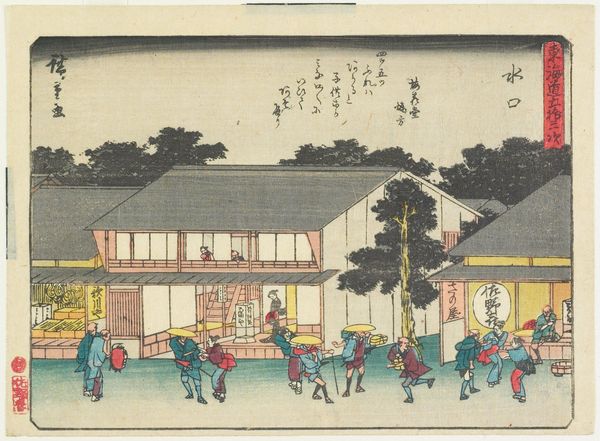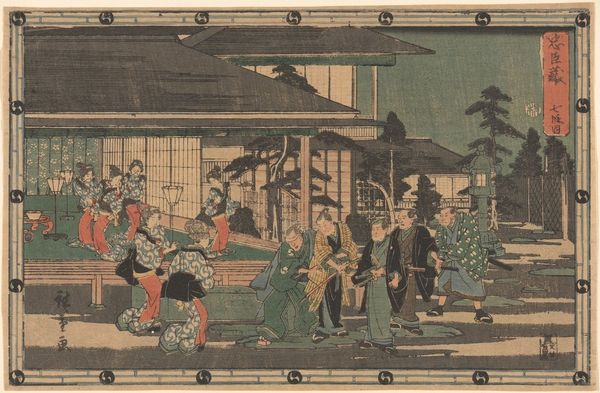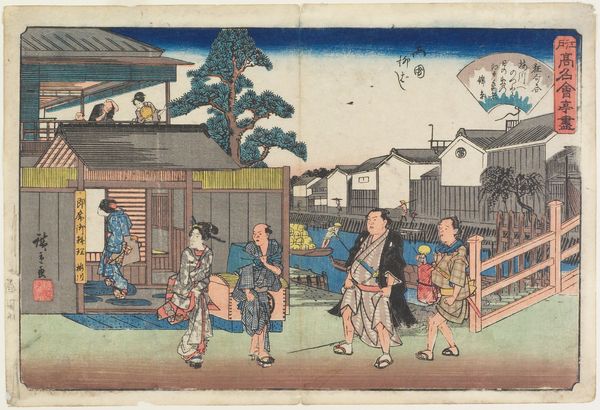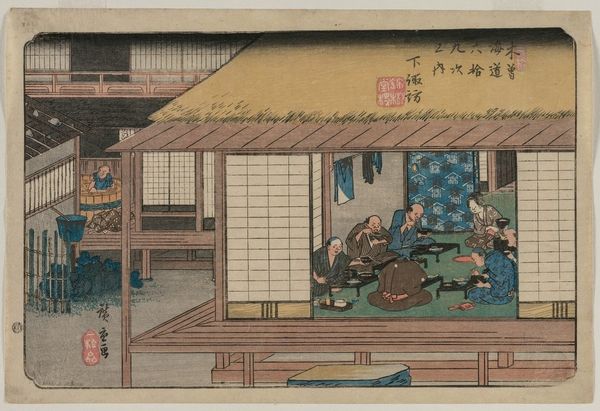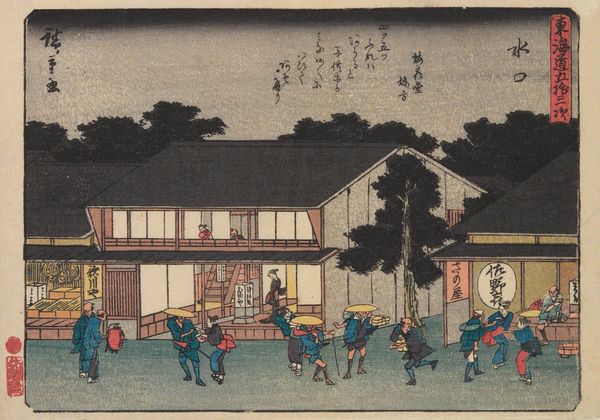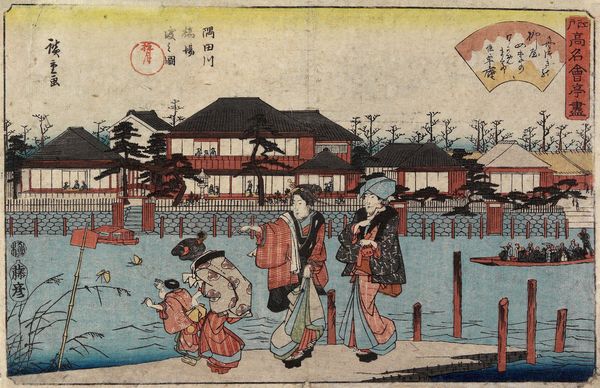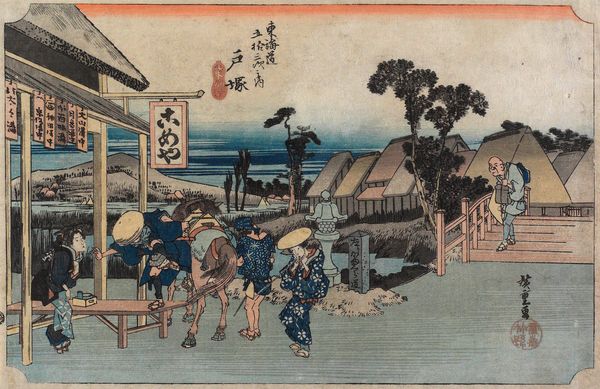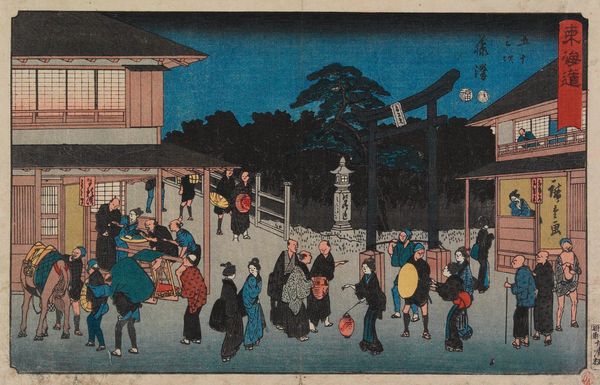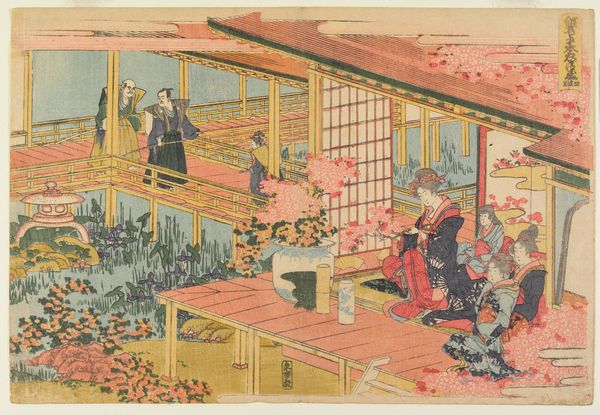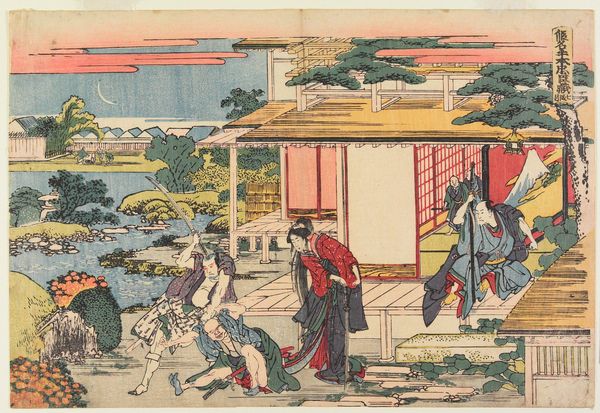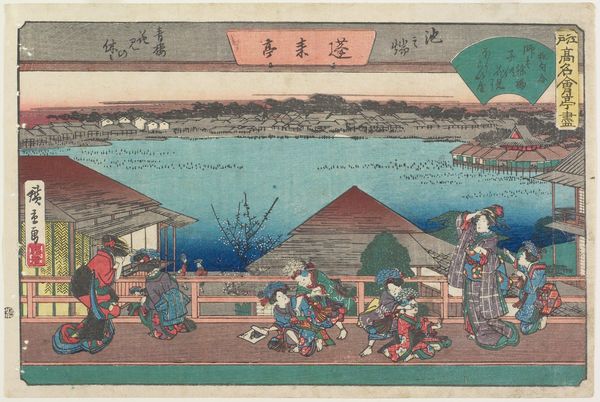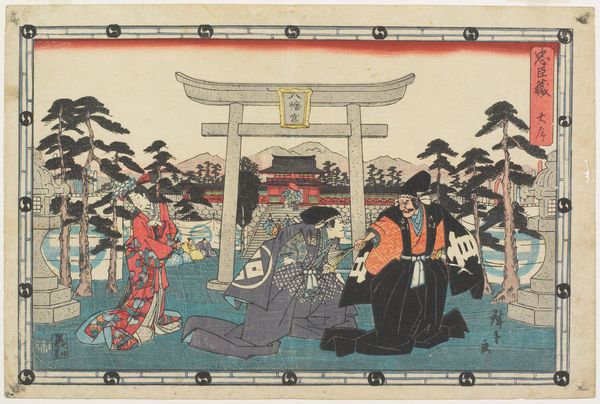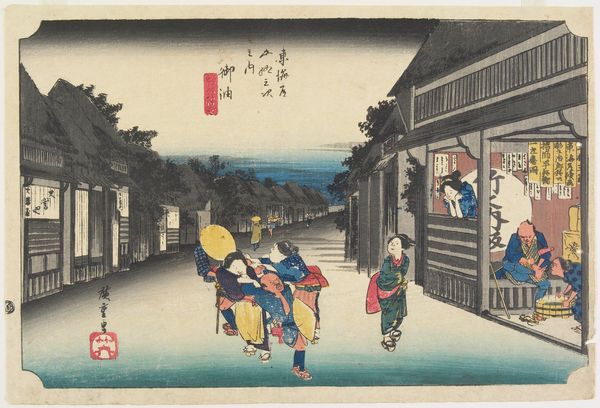
Tagawaya in Front of Daionji Temple c. 1838 - 1840
0:00
0:00
print, ink, woodblock-print
# print
#
asian-art
#
landscape
#
ukiyo-e
#
ink
#
woodblock-print
#
genre-painting
Dimensions: 8 13/16 × 13 1/2 in. (22.4 × 34.3 cm) (image, horizontal ōban)
Copyright: Public Domain
Curator: Utagawa Hiroshige's woodblock print, "Tagawaya in Front of Daionji Temple," created around 1838-1840, presents a scene brimming with late-night revelry. What are your initial thoughts? Editor: My first impression is this conveys such an intimate snapshot into 19th-century Japanese life. The cool, subdued color palette really enhances the bustling, perhaps even tipsy, atmosphere of the group depicted. Curator: Absolutely. Hiroshige, master of ukiyo-e, often captured scenes of daily life, and this is no exception. Prints like this offered the rising merchant class glimpses into the floating world, a culture typically reserved for the elite. This particular scene is significant for showing what could happen after a formal party. Editor: Right. It is that tension that I love, and notice the almost cartoonish body language, the slurred steps, a helping hand to get back home again…I am immediately curious about who these individuals are. Are they courtesans, businessmen, or performers leaving an engagement, perhaps? Curator: It’s likely a mix. Tagawaya was a known restaurant and pleasure house, so you’d find a diverse clientele there. The image offers a subtle critique of social hierarchy as the group clumsily spills onto the street, momentarily shedding their carefully constructed public personas. There is even a woman holding a lantern, illuminating not just the scene, but perhaps also these hidden truths. Editor: Yes! Let’s talk more about that gendered perspective. While it appears women may be helping other individuals, perhaps tipsy male companions, what support systems existed for women at that time? In my view, there are multiple ways to think about these historical and cultural factors that shape their lived experience, agency and representation. Curator: Precisely. By portraying them outside of idealized settings, we start to challenge the way ukiyo-e has historically framed women in Japan. These artworks offered an insight into female life but never revealed too much, given the censorship that the Tokugawa shogunate levied against these very representations! Editor: Definitely, that's why Hiroshige's snapshot is so important. Looking at this reminds us to look closer at how society works. I love what it says about social issues through the intimate view of people and places during that time. Curator: And by recognizing that tension, it urges us to investigate both the explicit, and the deeply implicit of lived experiences.
Comments
minneapolisinstituteofart about 2 years ago
⋮
By the late 18th century, a thriving culinary culture had emerged in Edo that catered to the city's wealthy residents. By the 1830s, printed guides ranking the best restaurants were published regularly and avidly read by food enthusiasts. In addition, restaurants became meeting places for the members of poetry societies and other cultural groups because their members were already regular patrons of popular chefs. This print, from a set of thirty by Hiroshige depicting the top restaurants in Edo, shows visitors leaving an establishment called Tagawaya. A man wearing a dark yellow jacket who seems to be drunk is leaving the restaurant together with his friend who holds a white towel to his forehead. Since the restaurant was located right by the Yoshiwara pleasure quarter, a prostitute, shown dressed in the purple gown, is in the party.
Join the conversation
Join millions of artists and users on Artera today and experience the ultimate creative platform.
